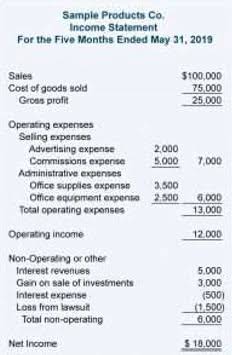
You focus on Production and Development expenses here, both of which may be linked to the company’s production in the first place. Then, you’d multiply the production volume times the average price each year for all commodities to get the revenue by year. The good news is that most of the same valuation methodologies you’re used to seeing – public comps, precedent transactions, and even the DCF model – still apply to (most) oil, gas & mining companies. The good news is that while bank and insurance modeling is almost a different game entirely, oil & gas modeling is more like a variation on a game you’re already familiar with. EAG Inc. operates under the principle that best practices can vary from company to company.
Cash Flow Statement
Proper accounting practices build trust among investors, regulators, and the public, fostering confidence in the industry. Oil and gas accounting is a specialized discipline essential for accurately tracking and reporting financial activities in the oil and gas industry. It ensures transparent financial reporting, compliance with regulations, and strategic decision-making. As an intricate discipline, oil and gas accounting plays a pivotal role in valuing assets, managing risks, and supporting sustainable practices in the exploration, extraction, and production of oil and gas resources.

Accounting standards codification update

Explore essential principles and practices in oil and gas accounting, from revenue recognition to asset impairment and taxation. Revenue recognition in oil and gas accounting can be complex due to factors such as production-sharing agreements, joint ventures, and royalty payments. However, without the subsequent discovery of new reserves, the resulting decline in periodic oil and gas accounting production rates will later begin to negatively impact revenues and the calculation of DD&A for both a SE and FC company.
Comprehensive Guide to Oil and Gas Accounting Practices

A merger model is a merger model is a merger model no matter how the company earns revenue, so nothing changes the fact that you need to combine all 3 statements, allocate the purchase price, and factor in synergies, acquisition effects, and https://x.com/bookstimeinc so on. Generally you look at a company’s filings and figure out what is production-linked and what isn’t, and then assume an increasing dollar value for the production-linked ones over time and make the non-production-linked expenses a percentage of revenue or other items. Expenses are more involved because you have both production-linked expenses – which you estimate on a dollar per barrel of oil or per cubic foot of gas basis – and then non-production-linked expenses, such as stock-based compensation and smaller, miscellaneous items. You must possess a deep breadth of knowledge about contemporary financial techniques and how they apply to the energy industry.
Seven key aspects of oil and gas accounting include:
Therefore, companies should capitalize all costs they incur in pursuit of that activity and then write them off over the course of a full operating cycle. Taxation in the oil and gas sector is a multifaceted issue that significantly influences the financial health of companies operating within this industry. Governments often impose a variety of taxes and royalties to capture a share of the revenues generated from natural resource extraction. These can include corporate income taxes, production taxes, and specific levies such as severance taxes. The complexity of these tax regimes requires companies to maintain QuickBooks meticulous records and employ sophisticated tax planning strategies to ensure compliance and optimize their tax liabilities.

- Oil and gas accounting is a specialized discipline essential for accurately tracking and reporting financial activities in the oil and gas industry.
- We are compliant with the requirements for continuing education providers (as described in sections 10.6 and 10.9 of the Department of Treasury’s Circular No. 230 and in other IRS guidance, forms, and instructions).
- Companies often use advanced software like PHDWin or ARIES to model these calculations, ensuring precision and compliance with industry standards.
- Additionally, it is essential to act with the utmost integrity, respect, and due diligence.
- The process involves not only the physical removal of assets but also the restoration of the site to its original condition, which can be both time-consuming and costly.
Companies record exploration costs capitalized under either method on the balance sheet as part of their long-term assets. This is because, like the machinery used by a manufacturing company, oil and natural gas reserves are considered productive assets for an oil and gas company. Generally accepted accounting principles (GAAP) require that companies charge costs to acquire those assets against revenues as they use the assets. Depletion, depreciation, and amortization (DD&A) are essential accounting practices in the oil and gas industry, reflecting the gradual consumption of capital assets over time. Depletion specifically pertains to the allocation of the cost of natural resources, such as oil and gas reserves, over their productive life.
